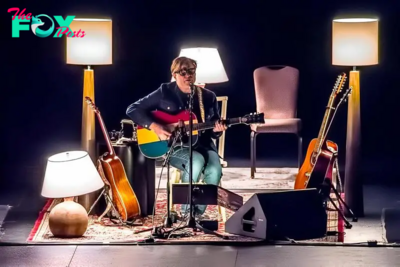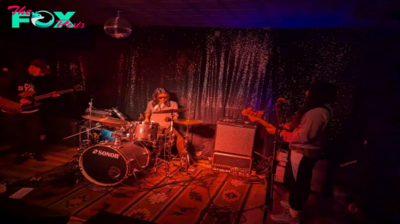Entertainment
REVIEW: Whenua (Q Theatre) ŌĆō Theatre Scenes: Aotearoa New Zealand Theatre

The primary a part of Whenua closes with the voice of celebrated choreographer Rodney Bell (Ng─üti Maniapoto), his phrases projected in crimson throughout a slanting white display ŌĆö ŌĆ£Ko au ko koe, ko koe ko auŌĆØ: I’m you, and you’re me.
Connections to 1 one other and to the land are central themes of this hanging double-bill from the New Zealand Dance Firm. The present, which gained acclaim on its European tour earlier this 12 months, includes ŌĆ£ImprintŌĆØ, choreographed by Bell and Malia Johnston; and ŌĆ£Uku ŌĆö Behind the CanvasŌĆØ, choreographed by Eddie Elliott (Ng─üti Maniapoto). The artistic imaginative and prescient underpinning these thrillingly completely different items shines by means of in each the manufacturingŌĆÖs technical points and its tremendously gifted performers (Katie Rudd, Brydie Colquhoun (Ng─üti Kawa, Ng─üpuhi), Bianca Hyslop (Ng─üti Whakaue), ŌĆśIsope ŌĆśAkauŌĆÖola (Utulau, Lotofoa; Tonga), Kosta Bogoievski, and Jeremy Beck (Ng─üi Tahu/Kai Tahu)).┬Ā
Whenua is an engrossing expertise, rooted in Te Ao M─üori and mixing conventional and fashionable kinds of dance in an revolutionary but accessible manner.
We’re guided into ŌĆ£ImprintŌĆØ by a collection of embraces. The dancers transfer amongst each other, wrapping their arms round every member of the corporate in flip; holding the form of that embrace after it has ended. Immediately weŌĆÖre launched to the center of the work ŌĆö the indelible impressions individuals depart on different individuals and their environment, and which our environment depart on us. The performers show a formidable fluidity and management, added to at occasions by a mesmerising weightlessness. ThereŌĆÖs each a sharpness and style to their actions as ŌĆ£ImprintŌĆØ cycles by means of what could be known as numerous ŌĆśphasesŌĆÖ. Each locations a single dancer centerstage, permitting them to point out off their abilities earlier than returning once more to the collective.
These phases are heralded by transient soundbites, largely of BellŌĆÖs voice, and a musical transition. Eden MulhollandŌĆÖs compositions embody calming nature-inspired sounds, choral preparations, and rhythmic modern beats. From the soothing to the staccato, the music traces the journey of the dancers by means of the piece. Rowan PierceŌĆÖs AV, spatial and lighting design is equally expressive. Slower sequences typically function a kind of smoky lighting from above and both aspect of the stage, whereas a row of bulbs on the again flash on and off brightly in the course of the extra frenetic moments. A recurring approach is the usage of a highlight at one finish of the area, which the dancers lean into as if listening for one thing. I significantly loved the second when two dancers swirled collectively behind the oblong white display in the course of the stage, their shadows blurred and multiplied; reminiscent once more of BellŌĆÖs phrases: I’m you, and you’re me.┬Ā
The display performs a extra outstanding function than IŌĆÖd initially anticipated, elevating and reducing at completely different factors within the piece. So, too, does the white material laid out onstage nearly ceremonially in the beginning. It transforms satisfyingly from one thing the dancers dance on to one thing they dance with, later being gathered up beneath their toes and draped throughout their shoulders. ItŌĆÖs acceptable that the set ought to be built-in into the efficiency on this manner; linked collectively simply as physique and land are linked.┬Ā
ŌĆ£Uku ŌĆö Behind the CanvasŌĆØ is a special beast, and feels just like the true headliner of Whenua. If the phrase I might use to suMMArise ŌĆ£ImprintŌĆØ is move, ŌĆ£UkuŌĆØ radiates energy. The heightened drama of this work is conveyed by a darker, starker stage than what we noticed in ŌĆ£ImprintŌĆØ, with no display and as an alternative a backdrop resembling, fairly aptly, a canvas. Rona Ngahuia OsborneŌĆÖs set design is complemented by Jo KilgourŌĆÖs lighting: quite a lot of the piece takes place in and round shadows. All of this invests ŌĆ£UkuŌĆØ with a suitably mythic high quality. Drawing on the M─üori creation story of Hineahuone, the primary lady molded from the earth by T─üne, it opens with the dancers crouched in a line on the entrance of the stage like creatures not but made. Via power and wrestle, they pull themselves up, or are pulled up by others.┬Ā
ThereŌĆÖs a solidity to the dancersŌĆÖ actions all through that displays the uncooked, explosive nature of this work. Exploring inner and exterior battle and the place of tangata whenua, itŌĆÖs the w─ühine posing the query: ŌĆ£Is that this my land?ŌĆØ I felt a higher sense of the narrative ŌĆśarcŌĆÖ of this piece, and was intrigued to search out the storytelling executed by means of the dancersŌĆÖ voices in addition to their our bodies. ŌĆ£UkuŌĆØ replaces their smooth exhales and exclamations in ŌĆ£ImprintŌĆØ with a full-blown vocal efficiency, involving waiata (ŌĆ£Tai ArohaŌĆØ) and haka. Eddie ElliottŌĆÖs daring choreography calls for consideration; as does the music created with Jason Wright and Alistair Deverick, which features as an efficient, typically ominous soundscape combining the primordial with the economic.┬Ā
Most compelling is the usage of clay, with the performers smearing it on themselves, each other, and the stage. An apparent reference to the earth out of which Hineahuone was shaped, the clay exhibits clearly on their darkish costuming (additionally by Osborne), enabling them to actually put on that story on their our bodies. The streaks of clay additionally inform the story of the bodily area, marking the place every dancer has been like a map. ItŌĆÖs a map that grows extra complicated because the piece builds in depth together with the dancersŌĆÖ actions. At occasions theyŌĆÖre locked collectively; at others, they break aside violently. When that rigidity is launched partway by means of the work, weŌĆÖre handled to a playful metatheatrical interlude, involving the w─ühine passing commentary on the t─üne. That interlude acts as a stunning turning level, with the feelings ramping up much more strongly than earlier than. But regardless of its rage, or maybe due to it, ŌĆ£UkuŌĆØ ends on a quieter notice ŌĆö a dimming stage and a dancerŌĆÖs deal with to Papat┼½─ünuku, confirming: ŌĆ£That is my residenceŌĆØ.┬Ā
Whenua performed the Q theatre the 10-Eleventh of April 2024
-

 Entertainment36m ago
Entertainment36m agoAnna Delvey Reunites With Ezra Sosa and Flips Him Off Ahead of ŌĆśDancing With the StarsŌĆÖ Finale Return
-
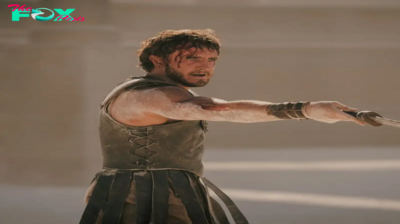
 Entertainment3h ago
Entertainment3h agoŌĆśGladiator IIŌĆÖ Ending Breakdown: Did Lucius Realise MaximusŌĆÖ Dream of Rome?
-
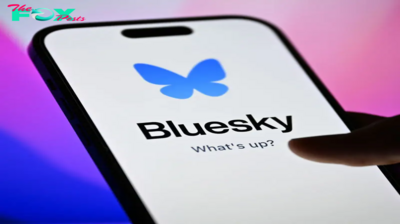
 Entertainment8h ago
Entertainment8h agoGet to Know Bluesky, the New X Alternative with 18 Million Active Users
-

 Entertainment9h ago
Entertainment9h agoChuck Woolery, Smooth-Talking Host of Love Connection and Wheel of Fortune, Dies at 83
-

 Entertainment10h ago
Entertainment10h agoBardavon Announces New Executive Director
-
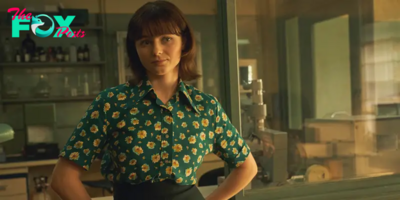
 Entertainment14h ago
Entertainment14h agoThe Real Story of Jean Purdy, Whose Work Developing IVF Is Portrayed in NetflixŌĆÖs Joy
-
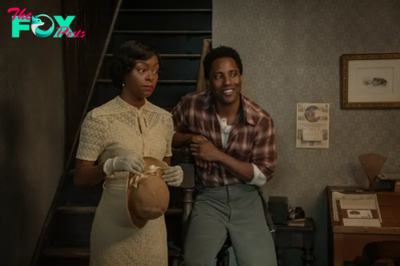
 Entertainment14h ago
Entertainment14h agoDanielle Deadwyler Is The Piano LessonŌĆśs Guiding Light
-

 Entertainment16h ago
Entertainment16h agoDonna KelceŌĆÖs ŌĆśHoliday TouchdownŌĆÖ Cameo Includes Sweet Easter Egg to Son Travis: ŌĆśLove You MommyŌĆÖ
